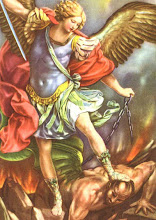
The 33rd day of the Omer, Celebrating Rabbi Shimon Bar Yochai
Lag Ba'Omer 2009: Tuesday 12 May, 2009
Bonfires, will thus be Monday 11 May, 2009 at night. In Hebrew, the letters are used for counting. Lamed equals 30, Gimmel equals 3. The 33rd day of the Omer, is thus called "Lag".
The Omer
The Omer is a period of counting from the second night of Pesach/Passover for 50 days until the holiday of Shavuot. This is based upon the verse from Scripture: "you shall count for yourselves from the day after the festival rest, from the day you bring the Omer Sacrifice, seven full weeks shall they be. Until the day after these seven full weeks shall you count fifity days, and then you shall bring a New Offering to Me" (Leviticus 23:15-16). Although the offerings can no longer be brought without a Holy Temple, we count these days for many reasons even today.
During the Omer, minor practices of mourning are observed: refraining from wedding ceremonies, cutting the hair, shaving, and others. This custom is in commemoration of a tragic loss of 24,000 disciples of Rabbi Akiva who perished between Pesach and Shavuot.
Lag Ba'Omer
On Lag BaOmer, these restrictions are lifted. Lag BaOmer is the day that the holy Rabbi Shimon Bar Yochai, author of the Zohar, passed away. Haircuts, shaving, weddings, and joyous music are permissible on this day.
As with all Jewish holidays, the holiday starts in the evening. One major custom is bonfires. The bonfire symbolizes the great light of the Rashbi's (Rabbi Shimon Bar Yochai's) Torah, the Zohar. Sings and circles of dance accompany the flames higher and higher.
Since haircuts were one of the activities restricted during the Omer, Lag BaOmer is traditionally a day for the "halakah", or "upshurnish" of three year old boys. Man is likened to a tree in Jewish lore, and the fruit of a tree is not used for eating or profit for three years. Likewise, there is a tradition to leave a young boy's hair for three years untouched, only cutting it when he fills three years. Many wait until Lag BaOmer of his third year for the initial haircut. Those who can make the journey to Mount Meron, the Rashbi's final resting place, prefer to have the haircut performed there.
Sources and History of Lag BaOmer Customs
Previous to the Arizal (Rabbi Isaac Luria Ashkenazi) in the late 1500's, records show that the Lag BaOmer celebration at Mount Meron had different significance and practice. In "BaShvil Haaretz" May 2005, an article by Yanon Shabtiel quotes Binyamin Mitodela (1170), Rav Pitachiah Morgensburg (1180), and Rav Shmuel Bar Shimshon (1211) among others that the journey to Meron for Lag BaOmer was to visit the cave of Hillel and Shammai. Yes, they all indicate that at that time the belief was that they shared a common final resting place. The common practice at that point was to visit the spring that even today flows in the area and pray for plentiful rainfall in the coming year.
By 1473 a letter from a traveler mentions both the Hillel/Shammai practice as well as Rashbi. In the words of this letter, "Meron: there is one cave wherein are buried 10 important Elders, among them Shammai and Hillel. A short distance from there is another cave in which are buried Rabbi Shimon Ben Yochai and his son.. and in that cave there is not a spring of sweet water at all. Rather Hebrews come at the three festivals to see the graves of the great "Tsadikim", Righteous Ones, especially the resting place of Rabbi Shimon Ben Yochai. They beseech with prayers, penitence, and supplications to the Almighty, may He be blessed, that He should send them water that they may remain there for a number of days. Immediately the dew would come..."
It was during the time of the Arizal and his students that the current practices and customs became dominant, according to the research of Shabtiel. In "Shibchei HaAri", Shlomo Shlomil ben Chaim writes that the Ari's students would come to Meron twice a year to unite and learn intensely the book of the Zohar for 10 days. There he wrote that the twice a year were 10 days before Shavuot, and 10 days before Rosh Hashana.
In contrast, Rav Chaim Vital, the primary student and author of most of the writings attributed to the Ari, wrote that on Lag BaOmer the Ari himself would take his young son to Meron with all of his household and cut the child's hair as is the well known custom. He would make a day of feasting and festivity.
So it appears that as with many customs of today, the strongest current customs are based on practices established by the Arizal and his students.
Picnics, BBQ's, and Bonfires
Get a JewishByte.com shoulder bag to pack your picnic, a baseball cap for that shul baseball game, or a snuggly sweatshirt for the late night bonfire. All with our Jewishbyte.com Lag BaOmer design:
http://www.jewishbyte.com/lagbaomer.php



















Nessun commento:
Posta un commento